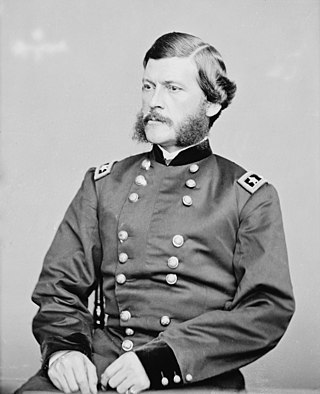
John Grubb Parke was a United States Army engineer and a Union general in the American Civil War. Parke's Civil War service was closely associated with Ambrose E. Burnside, often serving him as chief of staff in major engagements such as Antietam, Fredericksburg and the Overland Campaign. Parke also held significant field commands during Burnside's North Carolina Expedition, Vicksburg and the battle of Fort Stedman as well as brief stints in command of the Army of the Potomac.
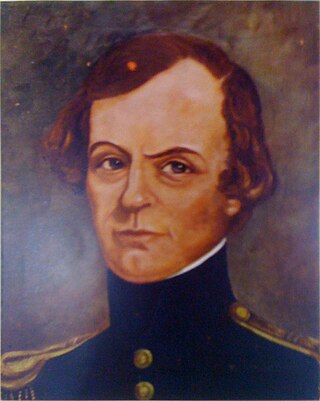
John Williams Gunnison was an American military officer and explorer.

The Pacific Railroad Surveys (1853–1855) were a series of explorations of the American West designed to find and document possible routes for a transcontinental railroad across North America. The expeditions included surveyors, scientists, and artists and resulted in an immense body of data covering at least 400,000 square miles (1,000,000 km2) on the American West. "These volumes... constitute probably the most important single contemporary source of knowledge on Western geography and history and their value is greatly enhanced by the inclusion of many beautiful plates in color of scenery, native inhabitants, fauna and flora of the Western country." Published by the United States War Department from 1855 to 1860, the surveys contained significant material on natural history, including many illustrations of reptiles, amphibians, birds, and mammals. In addition to describing the route, these surveys also reported on the geology, zoology, botany, paleontology of the land as well as provided ethnographic descriptions of the Native peoples encountered during the surveys.
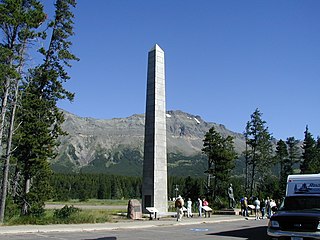
Marias Pass is a mountain pass in the Rocky Mountains in the western US state of Montana. Lying on the southern border of Glacier National Park, it is traversed by US Highway 2 and by the BNSF Hi-Line Subdivision. The pass is the lowest crossing of the Continental Divide between Canada and central New Mexico , and is the northernmost pass in the US open to automobile traffic year-round.
Adhesive weight is the weight on the driving wheels of a locomotive, which determines the frictional grip between wheels and rail, and hence the drawbar pull which a locomotive can exert.
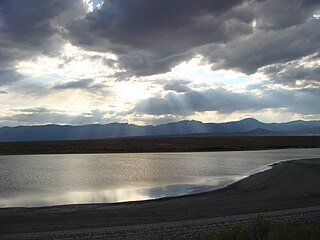
George Karl Ludwig Preuss (1803–1854), anglicized as Charles Preuss, was a surveyor and cartographer who accompanied John C. Fremont on three of his five exploratory expeditions of the American west, including the expedition where he and Fremont were the first to record seeing Lake Tahoe from a mountaintop vantage point as they traversed what is now Carson Pass in February 1844. Preuss drew two important maps based on his records from Fremont's first two expeditions.

Hulsea is a small genus of North American flowering plants in the family Asteraceae known commonly as alpinegold.

Allium amplectens, the narrowleaf onion, is a species of flowering plant. It is a onion native to the west coast of the United States, in Oregon, Washington State and California, also British Columbia in Canada. It grows in woods and especially in clay and serpentine soils.
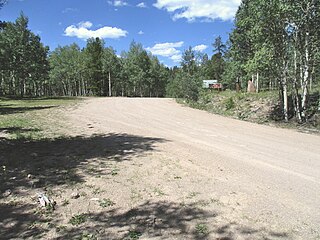
Cochetopa Pass is a mountain pass in the Rocky Mountains of south-central Colorado. It lies on the Continental Divide between the city of Gunnison to the northwest and the town of Saguache to the southeast. It also lies on the boundary between the Gunnison and Rio Grande National Forests. Its name is taken from the Cochetopa Hills that it lies within, Cochetopa being the Ute Indian word for "pass of the buffalo". The original pass is traversed by Saguache County Road NN14, a maintained gravel road. Another crossing, sometimes called North Cochetopa Pass and more often simply North Pass, is located nearby on State Highway 114, which is paved and reaches a slightly higher elevation.

Hesperevax is a small genus of flowering plants in the tribe Gnaphalieae of the family Asteraceae.

Allium tribracteatum, known by the common name Threebract onion, is a species of wild onion found in California.
Indian Wells is a former settlement in Imperial County, California. It was located 8 miles (13 km) south-southwest of Seeley.
Howard Stansbury was a major in the U.S. Army Corps of Topographical Engineers. His most notable achievement was leading a two-year expedition (1849–1851) to survey the Great Salt Lake and its surroundings. The expedition report entitled Exploration and survey of the valley of the Great Salt Lake of Utah, including a reconnaissance of a new route through the Rocky Mountains was published in 1852 providing the first serious scientific exploration of the flora and fauna of the Great Salt Lake Valley as well as a favorable impression of the members of the Church of Jesus Christ of Latter-day Saints, who had settled there beginning in 1847.
Joseph Christmas Ives was an American soldier, botanist, and an explorer of the Colorado River in 1858.
Stickneys Ferry was a settlement established in what became Tulare County. The ferry proper was where the Stockton - Los Angeles Stagecoach Road crossed the White River. The settlement was on Telegraph Flat, just below the confluence of the White River and Tyler Gulch, about 4.66 miles west of Tailholt.
Dragoon Wash, a stream tributary to the San Pedro River, in Cochise County, Arizona. It has its source just southwest of the town of Dragoon. 32°01′21″N110°02′46″W It runs southwesterly to meet the San Pedro River.
Explorer was a small, custom-made stern-wheel steamboat built for Second lieutenant Joseph Christmas Ives and used by him to carry the U. S. Army Corps of Topographical Engineers expedition to explore the Colorado River above Fort Yuma in 1858.

The Whipple Expedition (1853–1854) was led by Lieutenant Amiel Weeks Whipple and tasked with conducting a survey from Fort Smith, Arkansas, to Los Angeles, California, along the 35th parallel north. The expedition lasted for nine months and traveled 1,800 miles (2,900 km).
Cadotte Pass, known in the mid to late 1800s as Cadotte's Pass, is a pass in the Rocky Mountains located on the Continental Divide in the U.S. state of Montana. Pierre Cadotte, a white settler at Fort Benton, Montana, explored the pass in 1851. Prior to his exploration Tribal people utilized the pass while migrating to the buffalo hunting plains around the Sun River. Isaac Stevens, Governor of Washington Territory, named the pass after Cadotte in 1853. The pass is 6,073 feet (1,851 m) above sea level.
Railroad Pass is a mountain pass in Cochise County, Arizona. It divides the Dos Cabezas Mountains and the Pinaleno Mountains at an elevation of 4,403 feet / 1,342 meters, and lies between the Sulphur Springs Valley and San Simon Valley.












